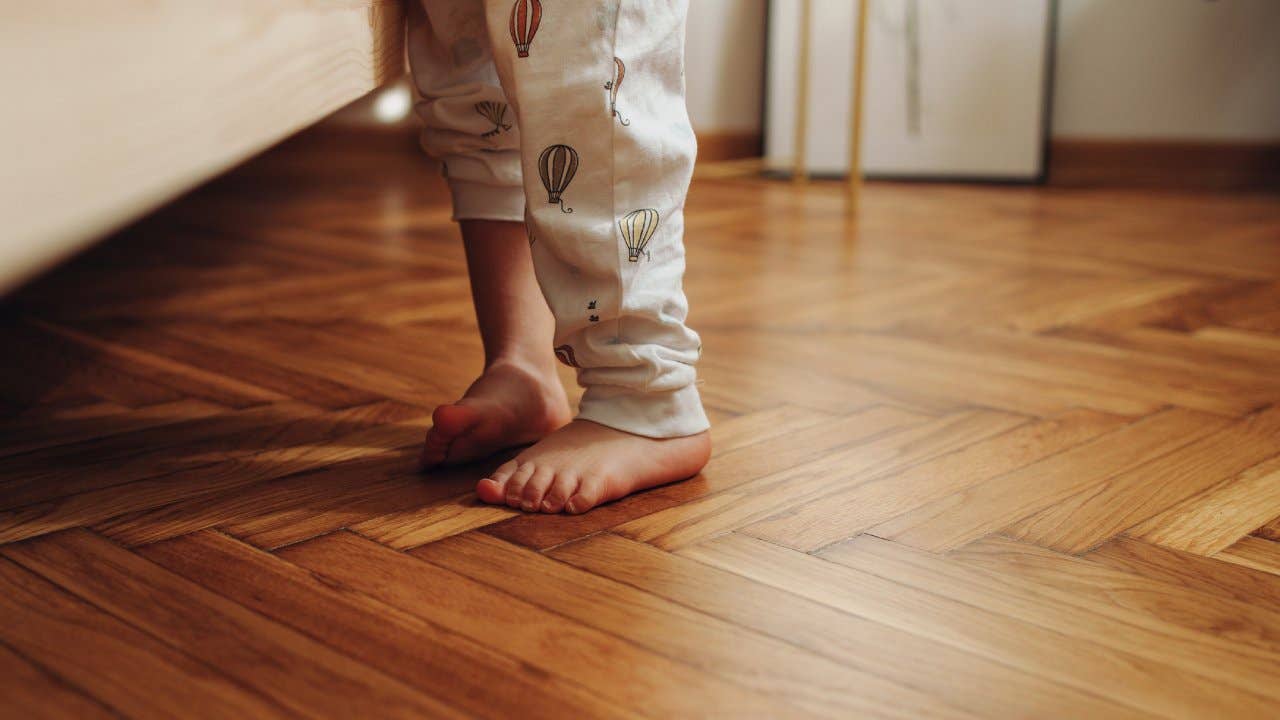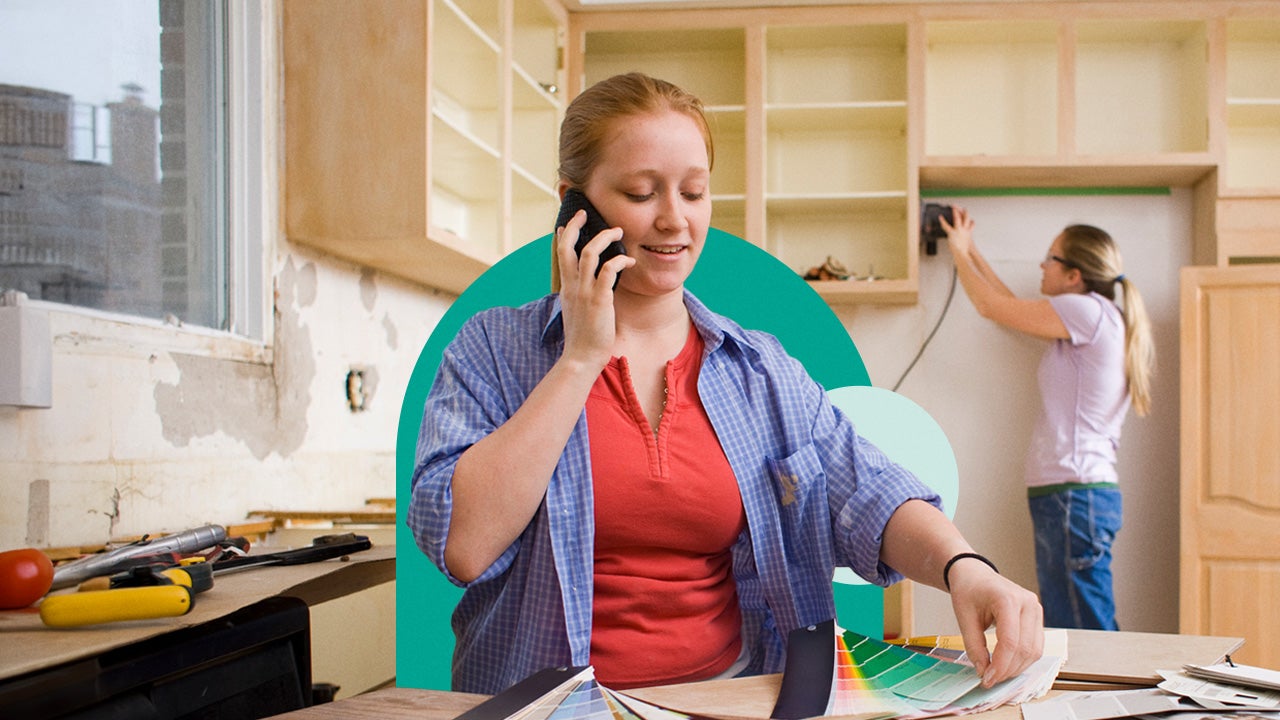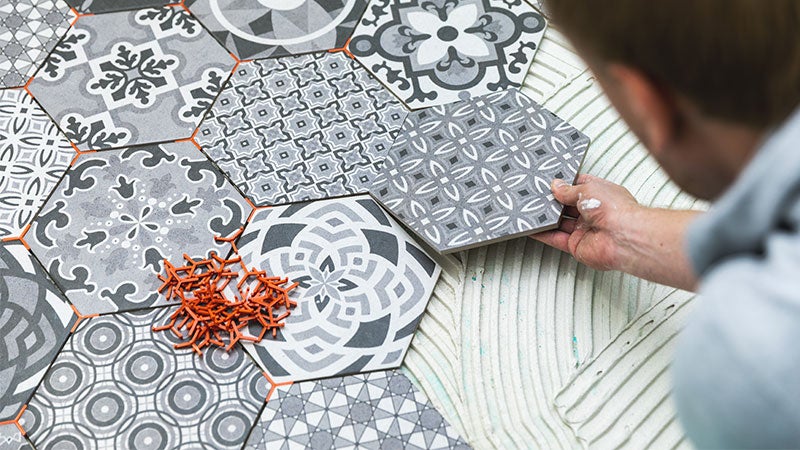What do heated floors cost?

Our writers and editors used an in-house natural language generation platform to assist with portions of this article, allowing them to focus on adding information that is uniquely helpful. The article was reviewed, fact-checked and edited by our editorial staff prior to publication.
Key takeaways
- Installing a heated floor in one or more rooms can range in price from $1,700 to $6,000 per room, with an average cost of $3,861.
- Among the two major kinds of systems, electric floor heating systems cost around $8 to $15 per square foot, while hydronic systems cost around $6 to $20 per square foot.
- While the type of radiant heat system is the biggest expense, labor, flooring material and room location also contribute to the price of a heated floor.
Like the look of a hardwood floor but hate its cold, hard feeling? Dread stepping into the tiled bathroom on a cold winter’s morn? Need to heat your home more efficiently?
Then you might be interested in installing a heated floor in one or more rooms. It sounds luxurious, and it is — ranging in price from $1,700 to $6,000 per room; the national average spend is $3,861, according to HomeAdvisor, the contractor search service. That’s for radiant heated flooring, the most common subfloor system.
What are the types of heated floors?
Flooring designed to warm a home is called radiant floor heating. As the name implies, the heat radiates, or spreads, up from the floor to the entire room, evenly warming up the space in a way that traditional air heating (“forced air”) systems can’t.
There are two basic kinds of radiant floor systems:
- Electric radiant floor heat: Electric radiant floor systems are powered by mats containing embedded electrical coils or with loose wires or cables strung through a grid. Though more expensive to maintain, they’re cheaper and easier to install, and are better for retrofitting in individual, already-built rooms.
- Hydronic radiant floor heat: Hydronic radiant floor systems have a boiler or furnace that heats liquid, usually water, which is then circulated to a variety of pipes (called loops or tubes) beneath the floor. Hydronic systems are more expensive to install, but cheaper to operate, and are better for heating an entire house.
Hydronic systems are further subdivided by the heating source — geothermal (the Earth), propane and solar.
How much do heated floors cost?
The cost of installing heated floors, usually expressed per square foot, depends on several things: the type of heating system you choose, the size and number of rooms you want to heat, and the sort of floors you have.
According to HomeAdvisor and Fixr.com, electric systems run around $8 to $15 per square foot, averaging $11. Hydronic systems overall run $6 to $20 per square foot, averaging $13.
But with hydronic systems, you also have to figure in the cost of a boiler, pump or heating tank:
- For geothermal systems, the pump can run from $4,750 to $13,500 (about half the cost of the entire system for a 2,400 square foot house). Figure on $7-20 per square foot, including installation.
- For solar systems, the water heating unit can run from $2,600 to $6,500 (roughly one-third of the entire system’s cost). (Some solar systems just use heated air, but liquid is more efficient). That runs $18-25 per square foot. And of course, you need to have solar panels.
- For propane systems, a tank runs $2,400 to $2,600 per unit, around three-fourths of the cost of the entire system. Figure on $6-17 per square foot.
What factors affect the cost of heated floors?
While the type of radiant heat system is the biggest expense, a few other factors affect the bottom line when it comes to heated floors:
Flooring material
The substance your floors are made of impacts the heating cost. You can install radiant heating systems with any type of floor, but they work better with some materials than others. The best flooring allows the unimpeded transfer of heat to the room; that’s why porcelain or ceramic tile and concrete floors are the most highly recommended (and partly why bathrooms, kitchens and basements are the most popular candidates for heated floors), and why wall-to-wall carpeted floors are not (it can be done, but it’ll cost you more). Flooring pros recommend that special protections be installed to prevent hardwood, laminate and vinyl floors from drying out.
Still, you can heat any sort of floor, as long as you’re willing to pay for it. Here’s a general guide as to what heated floors cost by type of flooring material.
| Type of Floor | Cost per Square Foot (installed) |
|---|---|
| Source: Fixr.com | |
| Vinyl | $10-27 |
| Carpeted | $10-33 |
| Concrete | $12-18 |
| Laminate | $16-27 |
| Tile | $15-40 |
| Hardwood | $15-30 |
| Stone | $16-62 |
| Marble | $25-90 |
Labor costs
Labor makes up the majority of a heated floor’s actual installation costs. If the materials (coils, tubes, wires, etc.) run an average $1.50-$2 per square foot, the plumber, electrician or HVAC pro is going to run $10 to $15 per square foot, according to Fixr.com.
If you’re retrofitting (installing a radiant heating system in an existing home), it’s going to cost 50 percent to 80 percent more than it would to install in a new construction, according to Fixr.com.
While it’s theoretically possible to install heated floors yourself, it’s not highly recommended, as the job involves complex electrical wiring and plumbing work — areas generally off-limits for most DIY-ers.
Location in the house
The cost of installing radiant heat flooring is influenced by the location within the home. If the floor is in the middle of the house, the cost will be lower than for areas on the perimeter or with access to the outside that receive more constant exposure to the cold.
Obviously, the bigger the area or room, the more it’ll cost, as systems are priced by the square foot. However, the more square footage you decide to heat, the less you’ll pay per square foot.
Tips to save money on heated floor installation costs
- Choose a cheaper system: Electric radiant heating is more economical to install, especially in existing homes. If you’re going with hydronic, propane is the least costly option.
- Limit the system: Just install heated floors in key rooms (like a kitchen) or hallways.
- Prep the home: While paying for professionals is generally unavoidable, you might save on hourly costs by getting the floors and rooms ready for installation; if you have some experience, you could even remove some of the flooring yourself.
- Check out tax credits: You might be eligible for tax credits or rebates through the Inflation Reduction Act or state/local programs, especially if you install a geothermal or solar system.
Advantages of heated floors
Heated flooring is expensive to install, but it’s a luxury that can save money in the long run. Radiant heating systems cost $1 to $5 per day to run, compared to an average $20 for traditional heating systems. Because radiant heating systems operate more efficiently (heat naturally rises), you experience fewer drafts and hot or cold zones, and you could lower your home’s thermostat while getting the same amount of warmth. Many radiant heat floor homeowners see a 10 percent to 30 percent savings in their energy bills.
Heated floors alone won’t substantially add to your home value, but it’s a feature potential buyers might truly appreciate — especially given that, once installed, it doesn’t require much maintenance. And, while warming up their feet, it’ll cool down the utility costs.
FAQ about heated floors
-
Radiant floor heating systems are reliable and long-lasting, with low ongoing maintenance costs. Electric systems only require occasional checks on electrical parts and general floor cleaning. Hydronic systems may require slightly more maintenance, such as inspecting boilers, flushing the system, and monitoring water quality. The overall lifespan of radiant floor heating systems is 20 to 35 years. Tubing and coils generally last 20 to 35 years, while boilers typically last 15 to 20 years.
-
Any flooring material can be installed with radiant heat. Flooring materials with exposed surfaces, such as ceramic tiles or finished concrete, are the most effective choices as they conduct heat well. Hardwood floors also fare very well with radiant floor heating, especially engineered wood.
-
In a typical new construction house with an area of 2,400 square feet, the cost of a radiant floor heating system would be between $19,000 and $36,000 for an electric system and $14,000 and $48,000 for a hydronic system.






